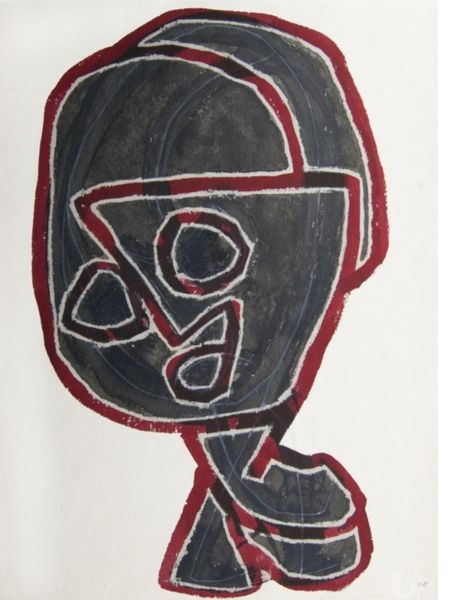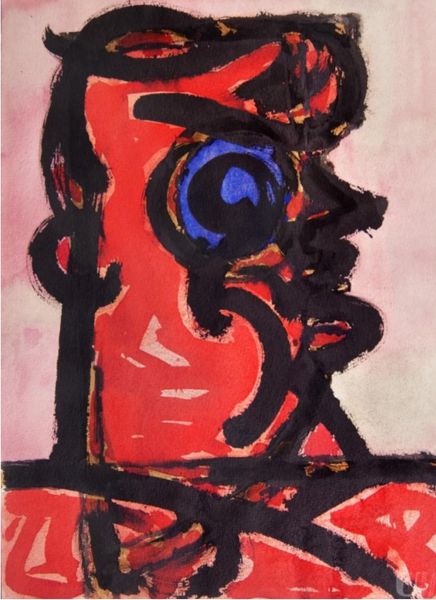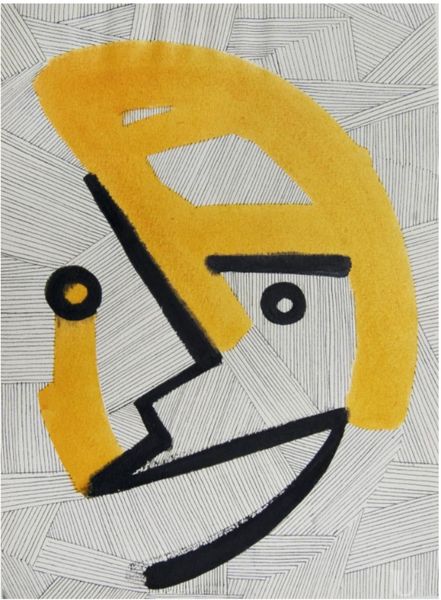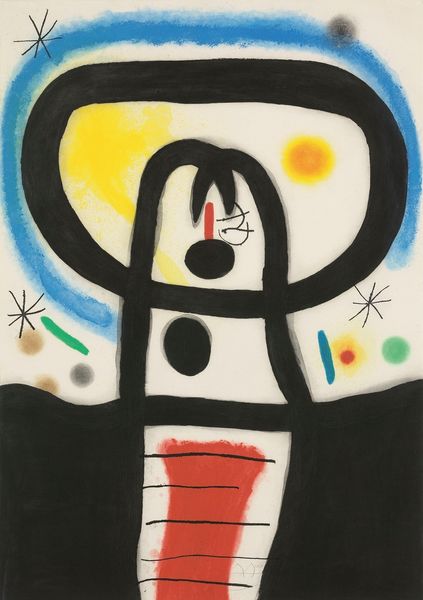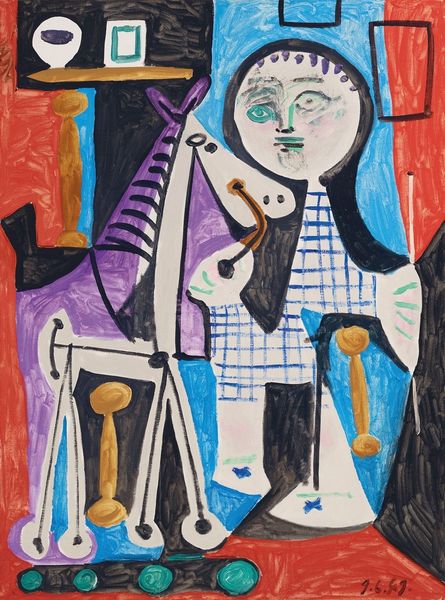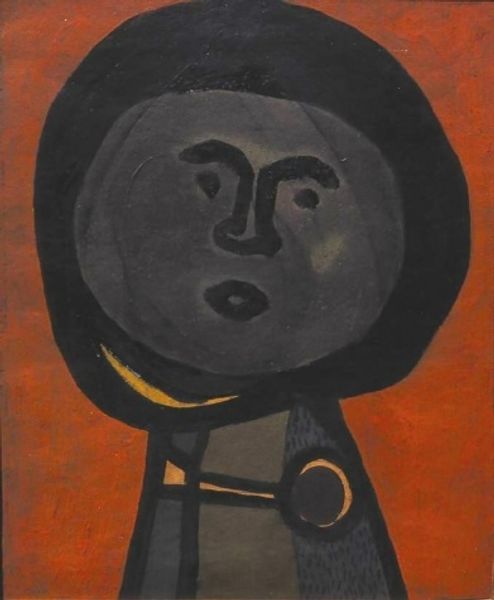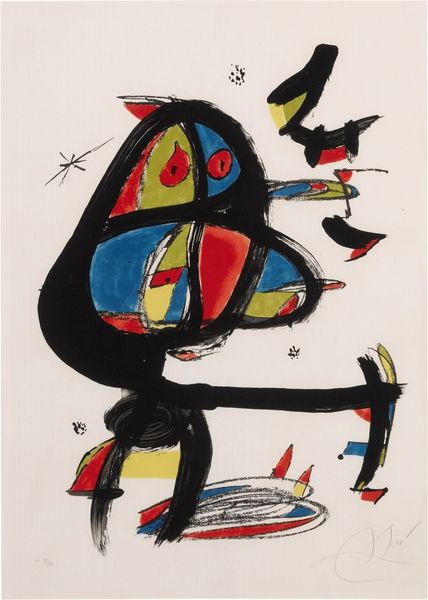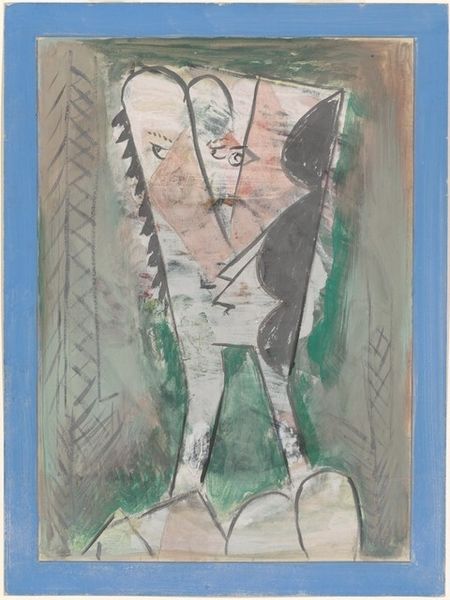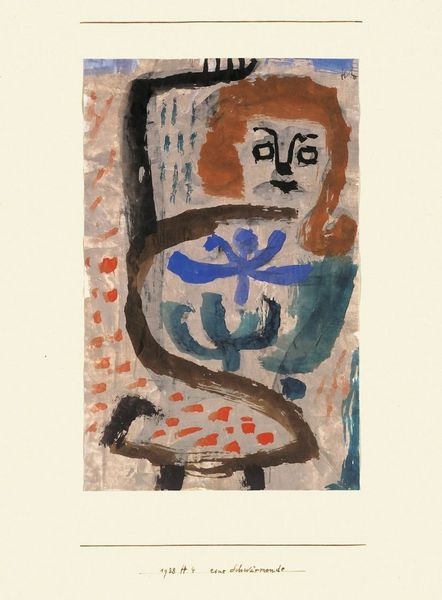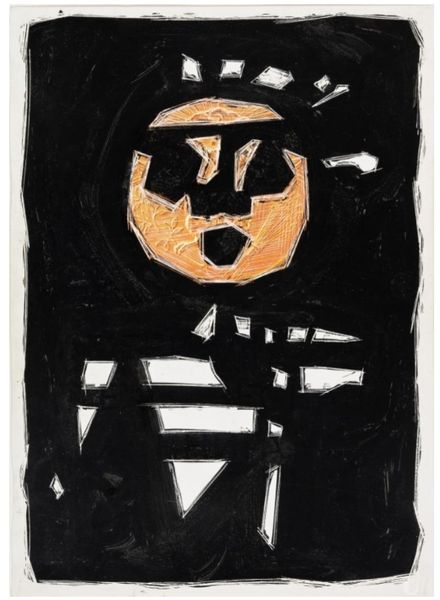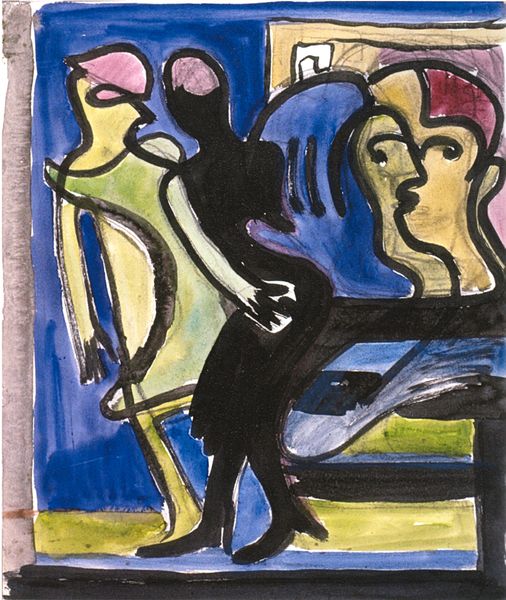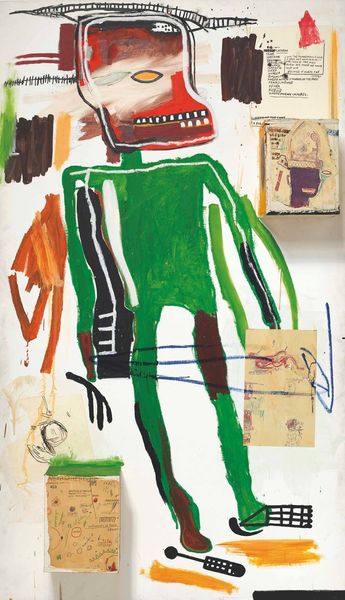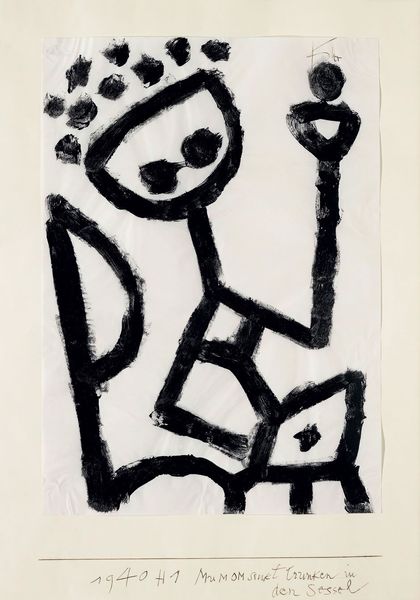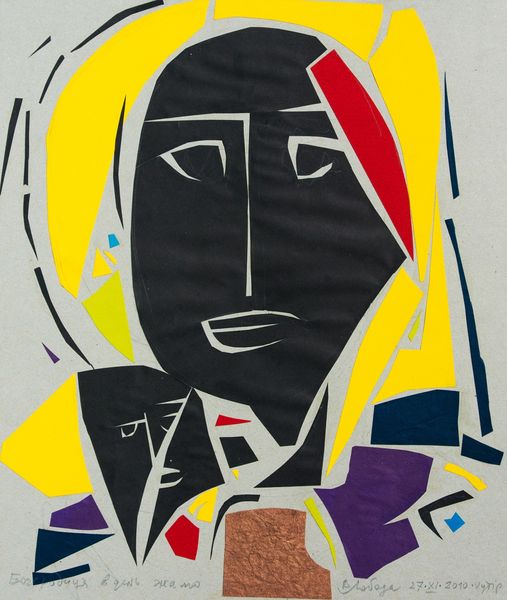
painting, acrylic-paint
#
portrait
#
popart
#
painting
#
pop art
#
acrylic-paint
#
figuration
#
geometric
#
pop art-influence
#
pop-art
#
modernism
Copyright: Vilen Barsky,Fair Use
Editor: This is "Girl" by Vilen Barsky, painted in 1960, and it looks like it's done with acrylic paint. The figure's so geometric, almost like a child's drawing. What do you see in this piece, especially given its context? Curator: Considering its creation in 1960, we must look at the societal emphasis on mass production. Barsky employed acrylics, a relatively new material at the time, signifying a shift in artistic production towards faster, readily available media. The "child's drawing" aesthetic perhaps underscores a critique of manufactured innocence, linking the figure to burgeoning consumer culture. Notice the process; visible brushstrokes deny a sleek, manufactured finish. What does that tell you? Editor: That perhaps he is not using these "modern" materials to embrace the shift towards mass production, but to reject it? Is it possible that by showing the imperfections he is trying to show the beauty and the value in things made with hand rather than machines? Curator: Precisely. Think about the dark background contrasting sharply with the figure. The materiality of that pigment becomes significant. Was it a cost-effective choice? Was it chosen to emphasize the subject as an object? Also, the 'object' in her hand - is that a sign of embrace, defiance, ignorance? The raw application emphasizes the artist’s hand, a direct challenge to the slickness valued in commercial pop art. Editor: I didn't consider the tension between the material and the process itself. It is as if he's reclaiming value from a world obsessed with effortless production. Curator: Right. It's a push-and-pull relationship with consumerism that extends beyond aesthetics into the realm of labor and value itself. Editor: It changes how I see the whole composition. Thanks!
Comments
No comments
Be the first to comment and join the conversation on the ultimate creative platform.
